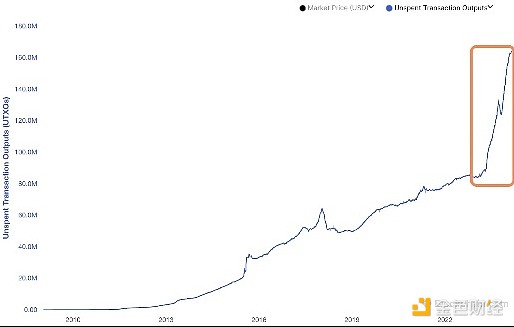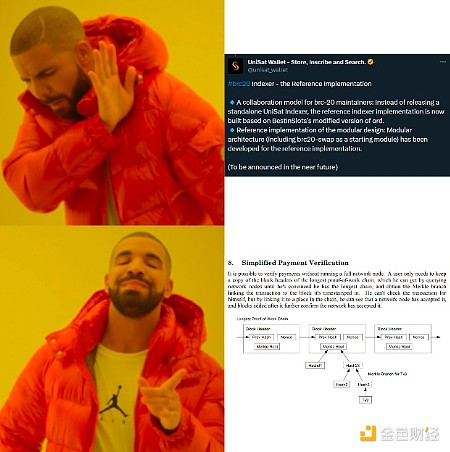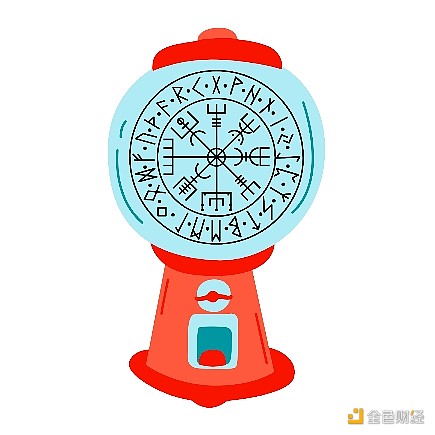Author: CB Spears, Bitcoin Accelerationist; Translation: Golden Finance xiaozou
1. Runes More interesting than you think
You may have heard of Casey Rodarmor's Runes idea. Runes is a popular NFT standard. Casey is launching Bitcoin. The same client used by Ordinals implements this standard. Casey’s idea directly responds to the clear market demand for Bitcoin’s fungible tokens, improving and solving some of the issues that many Bitcoiners (including Casey) have had with existing standards such as BRC-20. Casey will release his Runes token standard in time for the Bitcoin halving in April (block height 840,000). This could significantly increase Bitcoin miners’ fees, just when they need it most!
Most Runes speculators are mainly concerned about airdrop mining and have little understanding of how the protocol works. However, if you know a little bit, come with me and go down the rabbit hole of Runes to find out.
2. Runes operate under Bitcoin’s UTXO model
Most Runes degens Everyone knows the basic difference between Runes and BRC-20. "They are better suited for Bitcoin than BRC-20" is generally true, as it is better not to increase the UTXO set on Bitcoin (more UTXOs make it harder/more expensive to run a node). The set of inscription UTXOs has doubled in the past year, most of which are forever useless - they are "dead" BRC-20 mint/transfer inscriptions.
 < /p>
< /p>
Runes operations (minting, transferring equivalents) will not produce remaining useless UTXO. This is a very simple and straightforward improvement on the BRC-20. I understand that the market doesn't particularly care about technical improvements, so I'm glad that the market is enthusiastic about Runes, even if it's for speculative reasons, and hopefully such market sentiment will drive overall improvements to the network!
3. Has Runes improved the indexing problem?
BRC-20 is an account-based model, which means your balance is pegged to your Bitcoin address. In the case of Runes, your balance is tied to your UTXO. That is to say, to get your personal balance, you don't have to verify the entire state of all BRC-20, you only need to verify the UTXO you own and the previous UTXO, so in theory, you can have a very lightweight Runes client , you can even combine it with "utreexo", an interesting technology that supports running Bitcoin Core light clients on mobile devices.
This has a great impact on the state of index Runes. Basically, I believe it will allow many users to self-verify their Runes transactions, which means that the "decentralized indexer" problem that plagues the BRC-20 ecosystem has been greatly improved. For end users, Runes state proofs are easier to verify, perhaps even on their own lightweight devices.
 < /p>
< /p>
4. Runes may be compatible with L2s/Bitcoin extensions
Because Runes is based on UTXO model, which actually makes it very interoperable with many Bitcoin L2s (like the Lightning Network) or state chains like MercuryLayer. In theory, scaling solutions using the Bitcoin UTXO model would be natively compatible with Runes.
We know that Bitcoin fees are getting higher and higher. In this case, conducting fast transactions directly on Bitcoin L1 can become very expensive. Imagine that it is no longer reasonably economical to mint or transfer small amounts of BRC-20 on L1, then the trading volume of this fungible token will be moved elsewhere. A scaling solution natively compatible with the Bitcoin UTXO model would have significant design advantages over existing BRC-20 scaling models such as the black/white module system proposed by Unisat.
5. Runes pays your Bitcoin transaction fees
Rijndael at the nearest Gwart Show presented a crazy idea: You could theoretically have others pay your Bitcoin transaction fees in exchange for your Runes. Rijndael's theory is that if you have a transaction with two outputs, one of which is a Bitcoin payment and the other contains a Rune, but the Rune is "can be spent by anyone", then someone will pay for it. "Getting" that Rune pays for the entire transaction. In this case, you can trade at low or no fees while others pay for your trades to get Rune. This essentially lets Runes pay for your Bitcoin transactions.
This idea may be classified as "MEV", which is a hot topic in the Bitcoin field and may have some impact on Bitcoin's incentive mechanism. Very interesting impact.
6. Crazy idea: Contract + Runes
There are various contract proposals that are getting Increasing support for e.g. OP_CAT or OP_CHECKTEMPLATEVERIFY ("CTV"). These proposals allow users to "share" UTXOs. UTXO-compatible runes could take advantage of some of these suggestions. Let's imagine if just one of these concepts could be combined with the Runes standard.
Runes "Gumball Machine":
This is just a rough idea. For contracts like CTV, users can pre-fund Runes transfer transactions so that anyone can “buy” Runes from the contract. There are 2 inputs, the first input is the contract and the second input is the user payment, we removed the signature requirement for the transaction so anyone can use it. This way, the two outputs are as follows: The first output is a Runes transfer OP_RETURN, sending some Runes to the "payer" (the second input) and the remaining Runes to the second output. The second output is a recursive contract (my terminology may not be accurate) of the original transaction contract. This way, users can spit out Runes like a gumball machine.
 If You think the Runes gumball machine idea is cool, then you should take a look at the various contracts in general. I particularly recommend OP_CHECKTEMPLATEVERIFY, but maybe you could also start by visiting the "BIP Land" page in Taproot Wizards Quantum Cats!
If You think the Runes gumball machine idea is cool, then you should take a look at the various contracts in general. I particularly recommend OP_CHECKTEMPLATEVERIFY, but maybe you could also start by visiting the "BIP Land" page in Taproot Wizards Quantum Cats!
 JinseFinance
JinseFinance

 < /p>
< /p> < /p>
< /p> If You think the Runes gumball machine idea is cool, then you should take a look at the various contracts in general. I particularly recommend OP_CHECKTEMPLATEVERIFY, but maybe you could also start by visiting the "BIP Land" page in Taproot Wizards Quantum Cats!
If You think the Runes gumball machine idea is cool, then you should take a look at the various contracts in general. I particularly recommend OP_CHECKTEMPLATEVERIFY, but maybe you could also start by visiting the "BIP Land" page in Taproot Wizards Quantum Cats!